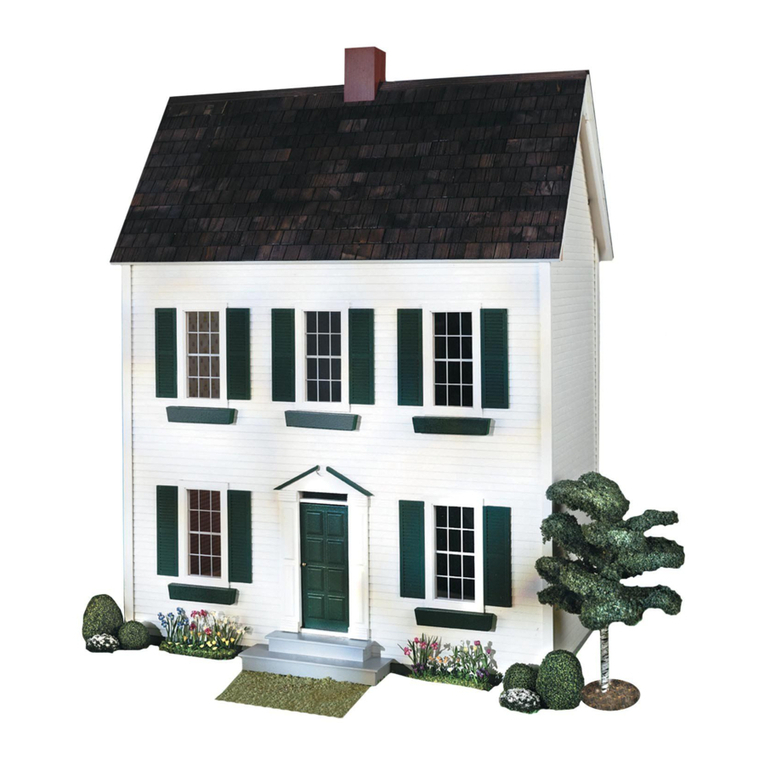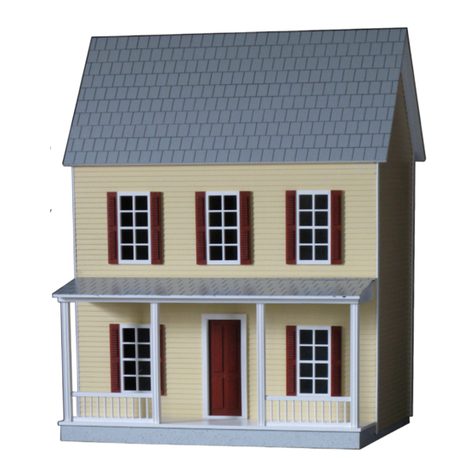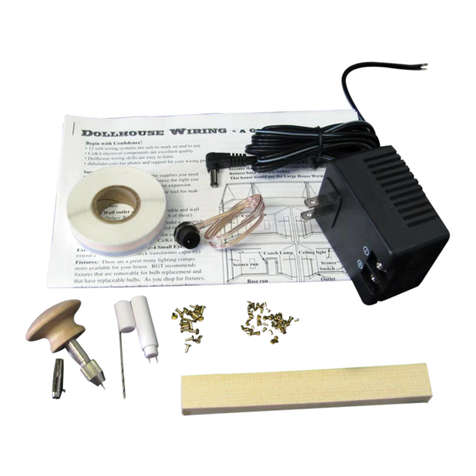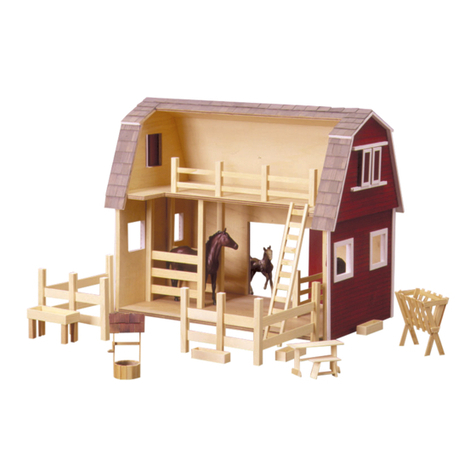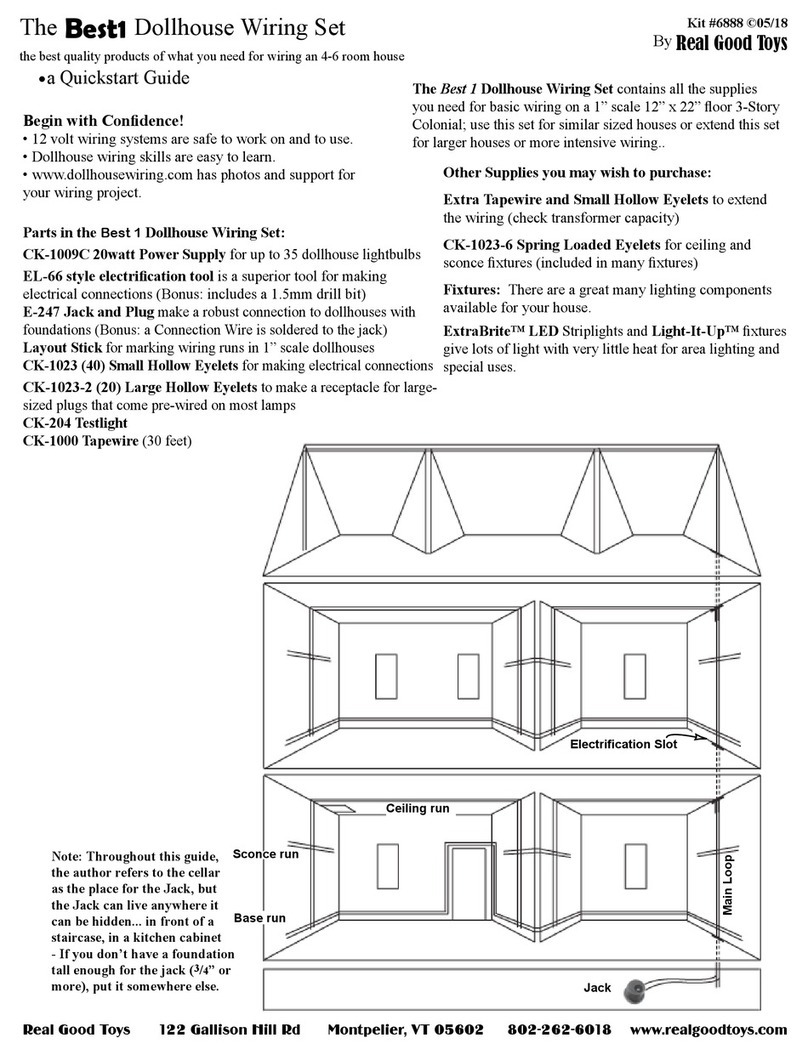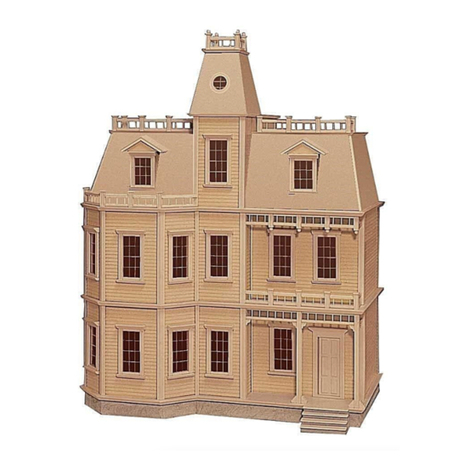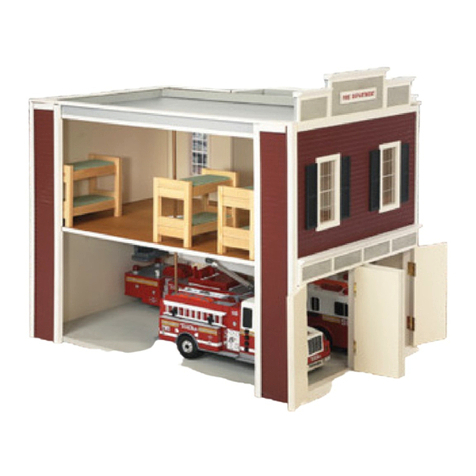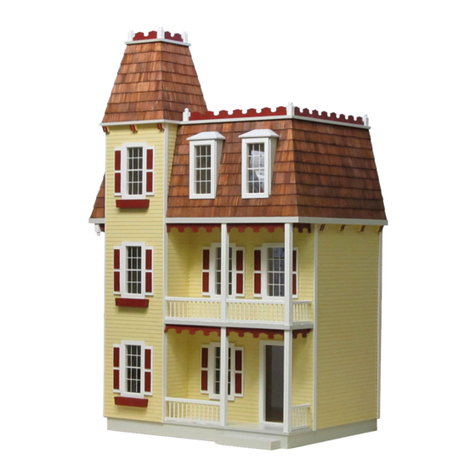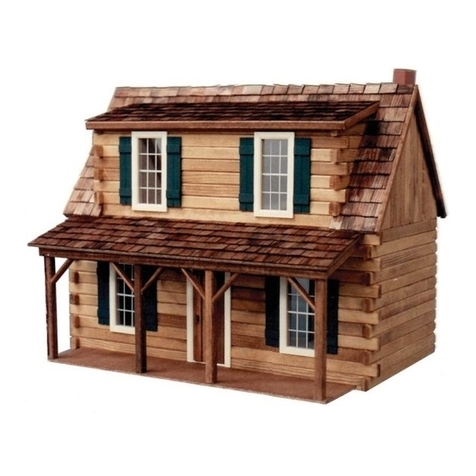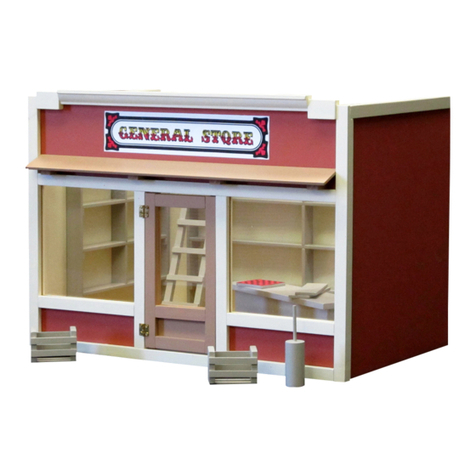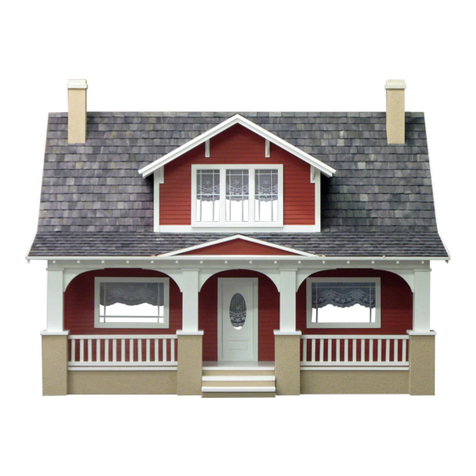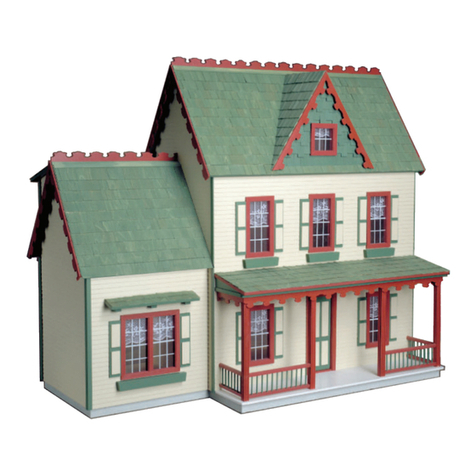Assembly Notes page 3
Instructions for Special Edition Kit #JM-66
Assembly Tips:
A large, clutter-free, well-lighted work area is helpful
during assembly, but a at work surface is essential.
Read the instructions carefully; look at each of the illus-
trations. !With the parts in your hands!, think the assembly
through before you proceed.
Test t each time you are ready to glue a piece in place...
then you’ll know you have it right.
If more tape or a helper is needed, it’s good to know that
before the parts have glue on them.
Don’t be stingy with glue or tape; use generous amounts.
Always wipe off excess glue immediately.
Keep one damp rag and one dry rag handy all the time.
Have weights available for holding things tight as glue
joints dry (stacks of books, gallons of pure Vermont Maple
Syrup - anything heavy).
Glue the body of your dollhouse together with white,
water clean-up glue that dries clear. Do not use instant-
bond (super glue), fast-tack, rubber cement, silicone, or hot
melt glues. They are all used in some wood applications,
but they all have some characteristic that makes them un-
desirable for the body of your dollhouse. Carpenter Glue
works well, but glue-smear dries yellow or tan; many of
the things you glue onto the house are pre-painted – extra
glue will show. I use Aleene’s Tacky Glue® for all house
body assembly.
Make sure everything is straight and at as glue dries...
That’s the shape that will be permanent.
If you Wallpaper, use pre-mixed Roman’s “Border” paste.
Brush paste on the wallpaper, then the wall, and nally
smooth the wallpaper into position.
Taking things apart: Heat softens glue. If you have to take
things apart, warm the part in the oven at 170ofor up to a half
hour to let the heat get into the joint where the glue is. Don’t
let it get hotter than you can touch or the paint may scorch.
Don’t heat window panes.
When glue is drying, skip ahead to up-coming assembly
steps and prepare the parts that will be used.
Q: Can I wallpaper before I assemble the doll house?
A: Yes you can (it’s your house!) Many experienced builders
are advocates of papering before construction - I am not.
My biggest objection to papering rst is that you are always
too skimpy with glue so none will squeeze out and get on
the paper. I try to use the amount of glue that lls the joint,
so some will squeeze out in every joint and be wiped up.
But wiping glue off of wallpaper leaves a streak, so the
temptation is to go skimpy, and the joints aren’t as strong.
Second, I can always tell a house that was pre-papered
because the corners show a void instead of being continuous
(see the slideshows about how to crowd the papers together
in the corner... you can’t do that with pre-papered walls).
Third, I have had to replace paper too often that has gotten
damaged by glue or tape during construction... that wastes
time and paper ($) and can make it so you are left decid-
ing whether to replace a damaged paper or letting it slide
because you don’t have any more of that pattern and you’ll
have to order it and that takes too much time (running out
but then needing another piece is a distressing moment).
Finally, I don’t nd pre-papering to be faster. By the time I
have done all of the extra planning that getting the papers in
the right place requires, I have used up any potential advan-
tage. I have great big blacksmith’s hands, and papering in a
nished house is easy for me.
Overview of the Build:
Identify and label all of the parts
Select the Foundation(s) that ts your House Foundation
Pre-assemble the Foundation
Paint everything one coat
Urethane the oor 1 coat, wiping off all surface excess
Sand everything until the paint is smooth, transparent, and
some of the wood is showing through
Sand (de-shine) and second-coat the oor
Clean the grooves
Build the walls, oor, and liner (cut a door in the Liner?)
Optional: locate and cut a door in the House Sidewall
Attach the Conservatory Foundation to the House Foundation
Second-coat the Walls
Attach the Conservatory Body to the House and Foundation
Attach the Facia and Gingerbread
Mark, Paint, and attach the Ceiling to the Conservatory
Optional: wiring
Assemble and nish painting everything else
Finish the outside
Finish the inside
Details of each step will be expanded along the way, but lots of
folks like to see how it all ts together before they start
Slideshows, demos, useful links, details, and photos are all at:
www.RealGoodToys.help
